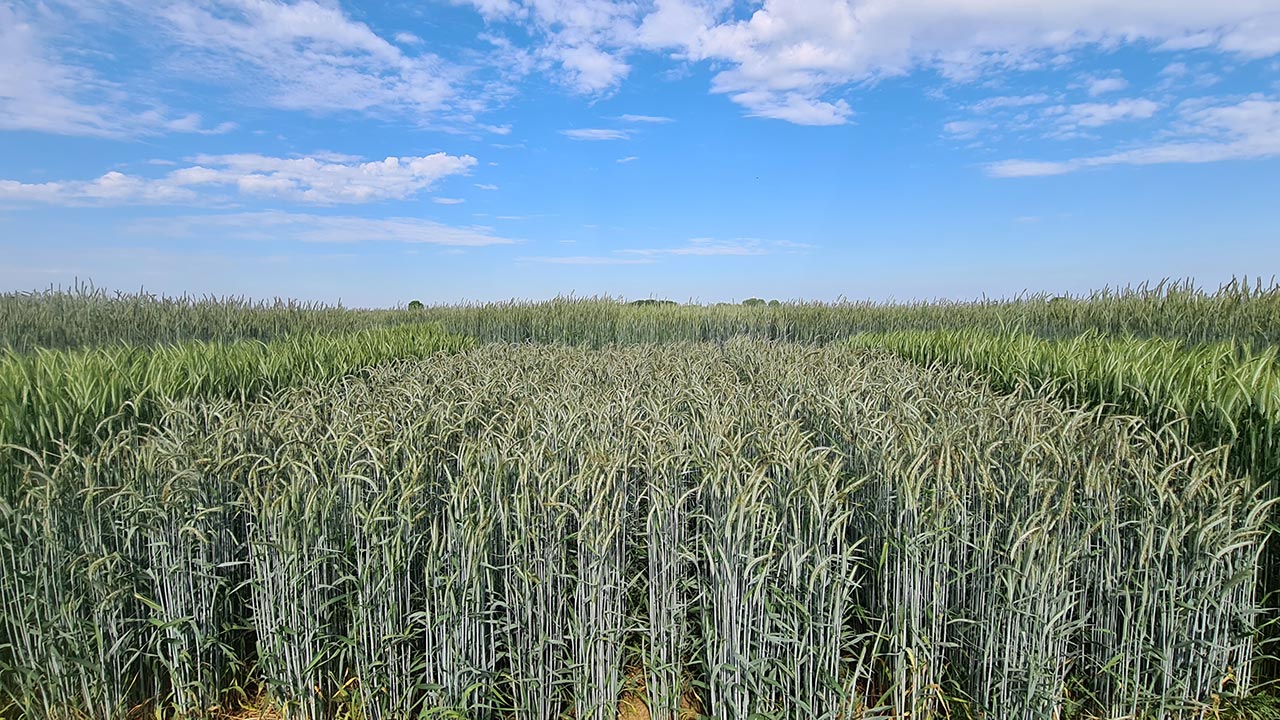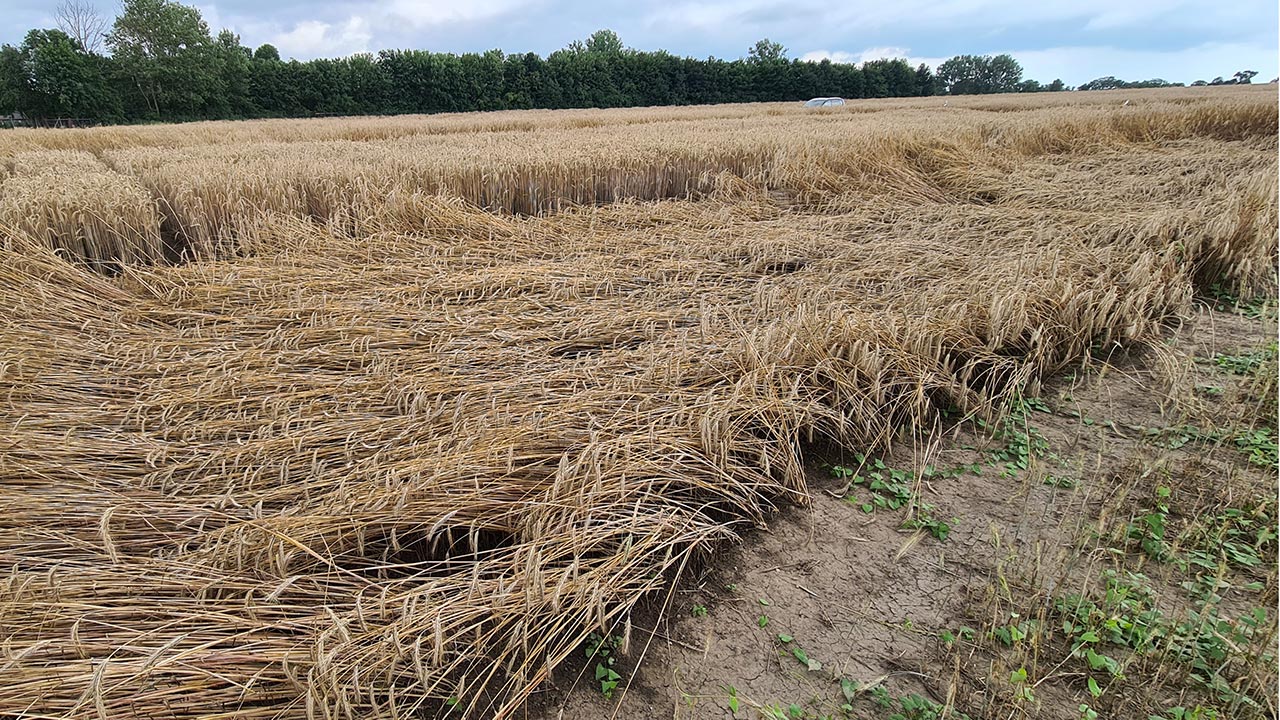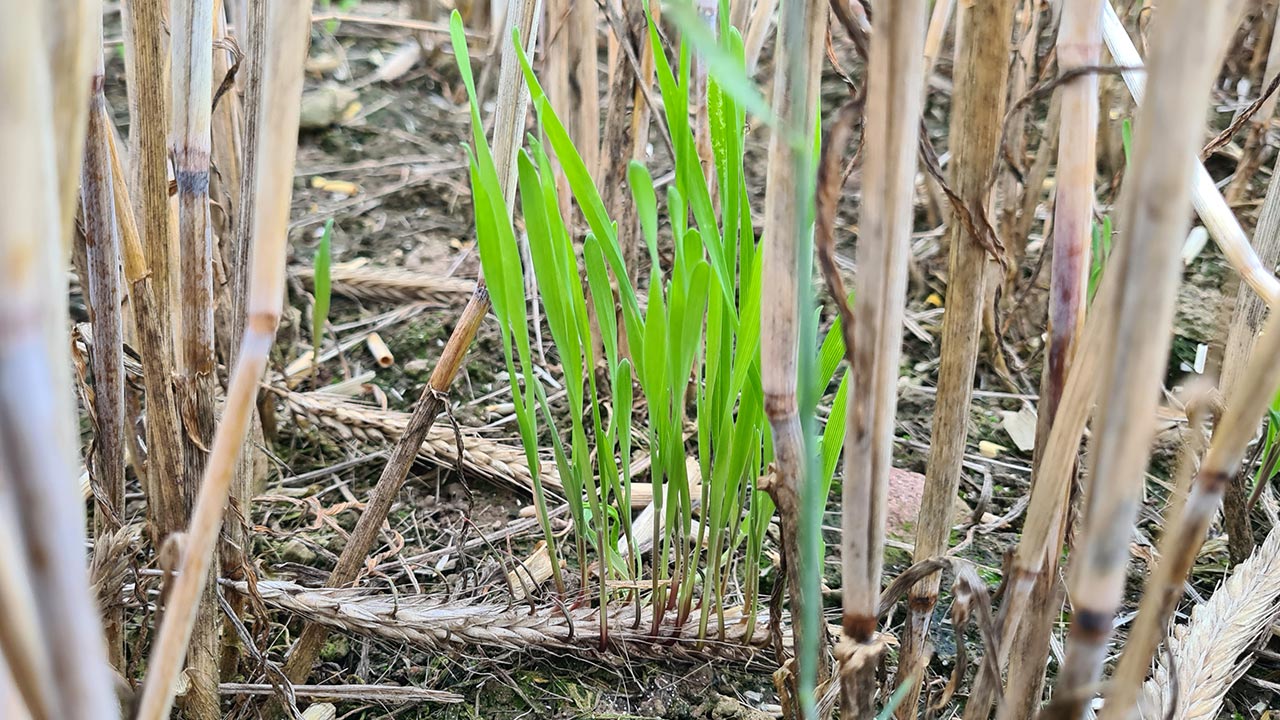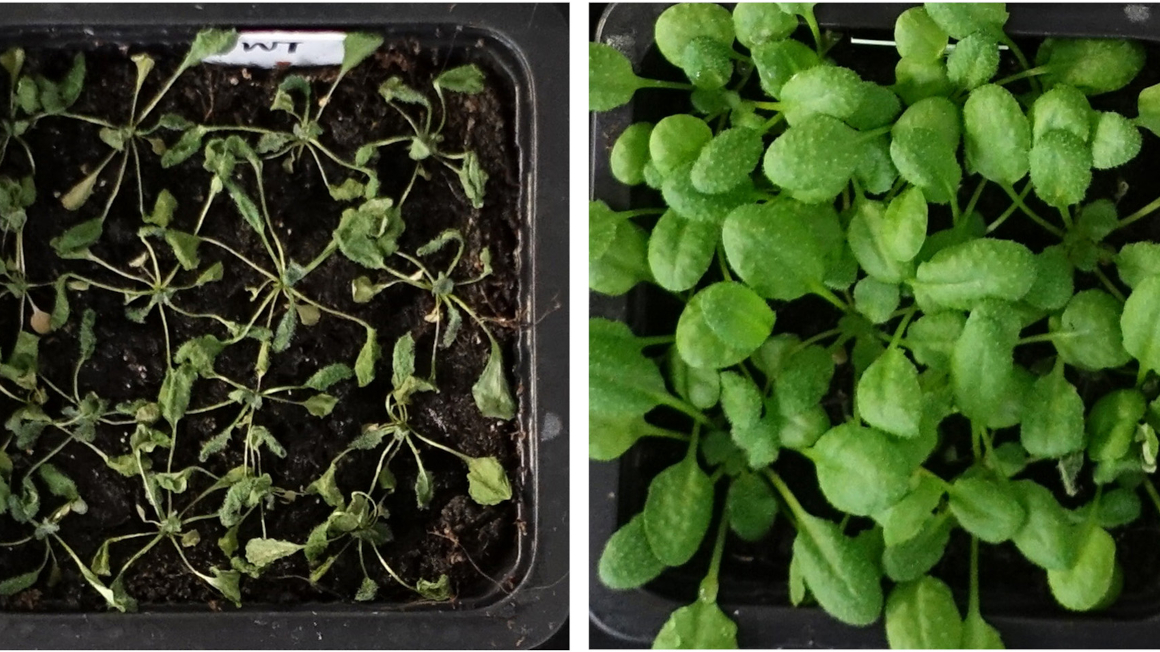
Agriculture is facing major challenges: It needs to feed a growing world population, become ecologically sustainable and withstand the changes brought about by the climate crisis. Rye could possibly be part of the solution: "Until the middle of the 20th century, rye was a key part of our agriculture," says Bernd Hackauf from the Julius Kühn Institute (JKI), "since then it has lost a lot of its importance."
While farmers in Germany today grow wheat on around 3 million hectares, rye only grows on around 0.6 million hectares. With this area, however, Germany is already the world's largest producer of rye thanks to high-performance hybrid varieties. The loss of importance of this grain becomes even clearer when you look at the harvest volumes: Less than three percent of the 271 million tons of grain that Europe's agriculture produces each year is rye. "At the beginning of the 20th century, 43 farms were still involved in rye breeding in Germany, today there are only four to five," says Hackauf.
Self-fertilization hampers breeding
Why did this happen? Rye is unique among small-grain cereals in terms of its reproductive biology as a cross-pollinator. Self-fertilizing lines that exist in rye are inferior in terms of yield. "Cross-pollination renders breeding adaptations extremely complex," explains Hackauf. As a result, rye farming was initially unable to keep pace with the mechanization of agriculture. Growth height in particular is still a challenge: while wheat has been relatively quick to improve winter hardiness, disease resistance and yield potential and, above all, to limit its height to around 100 centimetres, rye still reaches around 140 to 150 centimetres and more despite chemical growth regulators. This is confirmed by studies conducted as part of the recently completed transnational research project RYE-SUS, which was funded by the European Union under the Horizon 2020 innovation program.
In the current variety portfolio, rye is therefore the longest type of grain and therefore quickly sustains lodging damage, as it is called in technical jargon: especially after storms or heavy rain, it bends or even flattens completely on the ground. In such cases, even the most modern combine harvesters cannot pick up the harvest without losses. In addition, there is a loss of quality if the grains absorb moisture close to the ground.
Yet rye is a grain with great potential. Cross-pollination, which is challenging in terms of breeding, means that the genetic material is highly intermixed from one generation to the next. "The ever-changing combination of genes enables rye to adapt quickly when environmental conditions change," explains Hackauf - a clear advantage in times of climate change, which are characterized by increasing extreme weather events such as droughts and heavy rainfall. "It is reassuring to know that we can still achieve reliable yields and bake bread with rye when wheat has long since reached the limits of its performance," says the JKI researcher. Rye bread is also nutritionally valuable due to its high fiber content. The positive effect of rye's natural properties on current lifestyle diseases such as obesity, type II diabetes and cardiovascular diseases speaks for a renaissance of rye as a staple food.

A climate-friendly type of grain
Hackauf would therefore like to help rye out of its niche and back into the field. After all, rye has long offered a fundamental breeding advantage over wheat: 50 years ago, it was possible to establish the hybrid breeding method for rye - a prerequisite that wheat and barley breeders are working intensively on today. "Hybrid breeding plays a key role in ensuring that rye remains competitive in modern agriculture, because farmers can achieve yields that mean rye can compete with wheat." Hybrid varieties are unique in that their parents are genetically very different. This leads to the so-called heterosis effect, which is associated with particularly high performance in the first generation of offspring without the need for more water or fertilizer. A positive side effect is a one-fifth reduction in greenhouse gas emissions per hectare and an approximately eight percent lower CO2 footprint of hybrid rye compared to wheat, as scientists at the JKI have demonstrated in collaboration with the University of Hohenheim and the Federal Plant Variety Office as part of the RYE-SUS project. "In the context of the European Green Deal, the expansion of rye cultivation areas is an effective course of action for the agricultural sector to transform the EU into a sustainable, resource-efficient and competitive bioeconomy and to ensure that there are no net greenhouse gas emissions by 2050," the plant breeding researcher is convinced.
In RYE-SUS, Hackauf and eleven partners from seven countries have used hybrid breeding to genetically reduce the stalk length of rye. A short rye whose stalk length is controlled by a natural gene variant was described 50 years ago in the collection of plant genetic resources at the Vavilov Institute in St. Petersburg. Until 1989, breeders at the Volkseigene Gut Petkus, 50 kilometers south of Berlin, tried to harness this gene variant using classical population breeding. "The success was limited because the material did not meet the requirements for approval as a variety," reports Hackauf.
For a new variety to be recognized by the Federal Plant Variety Office, it must meet three criteria: Firstly, it must be clearly distinguishable from varieties that have already been approved. This is the case with semi-dwarfs due to the stalk length. Secondly, it must be homogeneous - in the case of semi-dwarfs, there cannot be some plants with normal growth. Thirdly, the variety must be stable, i.e. even after generations, the plants must not lose their genetic stalk shortening.
Theoretical considerations put a stop to short-straw breeding
After the fall of the Berlin Wall, these research activities in Petkus came to an end due to theoretical considerations regarding the potential effect of the short-straw gene on the root system. The root system is particularly important for rye because the undemanding plant is grown primarily on light soils far from groundwater. The more demanding wheat would not thrive in such locations. "The widespread assumption was that a shorter stalk would lead to a weakening of the root system and thus rob the rye of its strength for reliable yields," explains Hackauf. "But this was a purely theoretical consideration; until recently, there was no data to support this assumption." In addition, unlike in Germany, breeding programs in Eastern Europe have been using this gene variant since its discovery, but without modern hybrid technology, which has not yet been successfully established there. "If the gene variant was doing so poorly, our colleagues in countries where rye is still very important as a foodstuff would not be working with it," says the JKI researcher, explaining his reasoning.
Thus, the research team first developed a method for creating genetic fingerprints in order to be able to determine whether a rye plant carries the short-straw gene just a few days after sowing. Without such a molecular diagnostic method, breeders have to wait all winter, as rye sown in the autumn only shows its growth height at the end of April. Thanks to the scientific breakthrough achieved at the JKI, the short-straw gene could be crossed into elite breeding varieties in a comparatively short time. "This meant that after six years of research and development in 2020, we had all the prerequisites to be able to produce the first experimental hybrids on pure-bred short-straw seed parent lines," Hackauf recalls.

World premiere for short-straw hybrid rye
The world premiere took place in 2021: short-straw hybrid rye grew for the first time at 15 locations in the rye belt of Europe and at two locations in Canada. The heavy rainfall, which was a disaster for many people that year, provided valuable insights for the researchers. The newly developed semi-dwarfs grew on the trial fields alongside genetically almost identical normal-straw rye, which was treated with growth regulators as is customary practice. "After heavy rainfall of more than 200 litres per square metre, we were able to observe that the normal-straw rye suffered extensive lodging damage. The semi-dwarfs stood like a charm." The following year provided the perfect complement: in 2022, the trial fields experienced drought - and the semi-dwarfs produced a highly significant improvement in yield compared to the previous year.
The team thus achieved a breeding advance that had been more than 30 years in the making. The prototypes fulfil all the requirements for variety approval. "We are convinced that the natural stalk shortening will make rye more attractive for agriculture," says Hackauf. Stable varieties save fossil fuels and the associated CO2 emissions during harvesting because they do not sustain lodging damage and the combine harvester can work faster. They also save CO2 emissions because the harvest does not require additional drying.
Robust yields instead of a few per cent more in peak yields
Even if the first prototypes do not quite reach the peak yields of normal-straw varieties, the proven core functionality of the semi-dwarfs after heavy rain and drought argues in favour of intensifying their cultivation. The current varieties are the result of 50 years of breeding work to adapt rye to the needs of farmers, consumers and the environment. The semi-dwarfs must now catch up on this lead.
"What is the value of a few per cent higher yield of normal-straw rye if it cannot be harvested in the desired quality due to unpredictable extreme weather events?" asks the JKI researcher. The researcher gathered plenty of ideas on which traits need to be intensively worked on in breeding this completely new type of variety in the RYE-SUS project. "In any case, the root system of semi-dwarfs is not adversely affected by the short-straw gene. We put these reservations to rest after extensive phenotyping in the field," says Hackauf with satisfaction.
The research project has thus provided proof of feasibility. The next step is to optimise short-straw lines to improve yields even further and develop varieties with defined grain qualities, for example with superior baking properties or tailored for animal feed. This, the scientist hopes, could make rye even more attractive and make a sustainable contribution to securing the food supply during the climate crisis.
Author: Björn Lohmann


